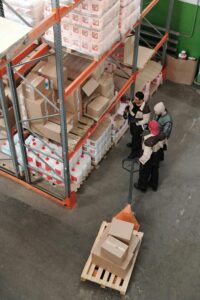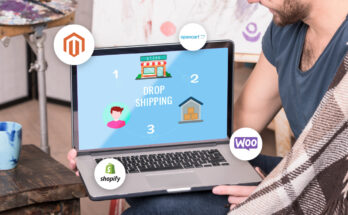Mastering Amazon FBA Wholesale: A Beginner’s Guide to Profitable Success
What is Amazon FBA?
(How to Start on Amazon Wholesale) Amazon FBA, or Fulfilled by Amazon, is a service provided by Amazon that allows sellers to store their products in Amazon’s fulfillment centers. When a customer places an order, Amazon picks, packs, and ships the order, provides customer service, and handles returns. This makes it easier for sellers to scale their businesses without the hassle of managing inventory and logistics.
The Three Types of Products You Can Sell on Amazon
1. Arbitrage
Arbitrage involves buying products at a lower price and reselling them on Amazon for a higher price. This can be done through online arbitrage (from retailer websites) or retail arbitrage (from physical retail stores).
2. Wholesale
Wholesale involves buying products in bulk from a wholesaler and reselling them on Amazon. This strategy can be profitable as you often get significant wholesale price discounts.
3. Private Label
Private label involves creating your own branded product, which you then sell on Amazon. This requires more upfront investment and work but can lead to higher profits in the long run.
How to Start on Amazon Wholesale

Getting Started with Amazon FBA
Opening an Amazon Seller Account
To start selling on Amazon, you’ll need to open an Amazon Seller account. There are two types of seller accounts: Individual and Professional. The Professional plan is recommended, as it allows you to sell more than 35 items per month and access additional features.
Contacting Amazon Support
If you encounter any issues with your Amazon account or need assistance, you can contact Amazon support through chat, phone, or email. While Amazon’s customer service may not be the best, they can still help you resolve any problems you’re facing.
Understanding the Amazon Seller Central Dashboard
The Amazon Seller Central dashboard is where you’ll manage your Amazon business. It includes important information such as your orders, sales, inventory, and buy box status.
Adding a Product to Your Inventory
To add a product to your inventory, you’ll need to find the product’s ASIN (Amazon Standard Identification Number) and enter it into the “Add a Product” section of your Seller Central account. You’ll then need to provide information about the product, such as the price, condition, and fulfillment method.
Understanding the Amazon Buy Box
The Amazon buy box is the box on the right side of a product page where customers can add the item to their cart. The seller who wins the buy box is the one who will make the sale. Factors such as price, seller rating, and inventory levels can affect who wins the buy box.
Calculating Your Return on Investment (ROI)
ROI is a crucial metric to understand when selling on Amazon. It measures the profitability of your investment in a product. To calculate ROI, you’ll need to consider the cost of the product, Amazon’s fees, and the selling price.
Sending Your Products to Amazon
Once you’ve added a product to your inventory, you’ll need to create a shipping plan to send your products to Amazon’s fulfillment centers. This involves printing labels, packaging your products, and scheduling a UPS pickup.
Finding Profitable Products
There are several methods you can use to find profitable products to sell on Amazon, including:
- Retail arbitrage: Scanning products in physical retail stores and checking their Amazon prices.
- Online arbitrage: Searching for discounted products on retailer websites and reselling them on Amazon.
- Amazon to wholesale: Identifying best-selling products on Amazon and finding wholesale suppliers for those products.
- Wholesale to Amazon: Searching for wholesale suppliers and checking if their products can be profitably sold on Amazon.
- Local wholesalers: Connect with local wholesalers who may have unique products or better pricing than online wholesalers.
Analyzing Product Profitability
When evaluating potential products to sell, it’s important to analyze the following factors:
- Best Sellers Rank (BSR): The lower the BSR, the more the product is selling.
- Recent reviews: Check for recent positive reviews to ensure the product is still selling well.
- Profit margins: Calculate the potential profit per unit after considering your costs and Amazon’s fees.
Building Relationships with Wholesalers
To successfully source products from wholesalers, you’ll need to:
- Establish a professional image by creating a website, business email, and virtual office address.
- Start with low-barrier-to-entry wholesalers like MX Wholesale or Harrisons Direct, then use them as references to open accounts with more exclusive wholesalers.
- Communicate with wholesalers over the phone to build rapport and gain advantages, such as being the first to know about new stock.
Maximizing Sales Against Competitors
When selling the same product as other sellers, you can use the following strategies to gain an edge:
- Price matching: Matching the lowest price to split the buy box.
- The “night owl” method: Lowering your price at night to capture more sales, then raising it back in the morning.
- Patience: If a competitor is undercutting you to the point of not making a profit, wait for them to run out of stock before reclaiming the buy box.
Conclusion
Mastering Amazon FBA Wholesale takes time, effort, and patience, but it can be a highly profitable business model. By understanding the different product types, implementing effective product research and analysis, building relationships with wholesalers, and using strategic pricing tactics, you can set yourself up for long-term success on the Amazon platform.





One Comment on “How to Start on Amazon Wholesale 2024 (A Complete Guide)”